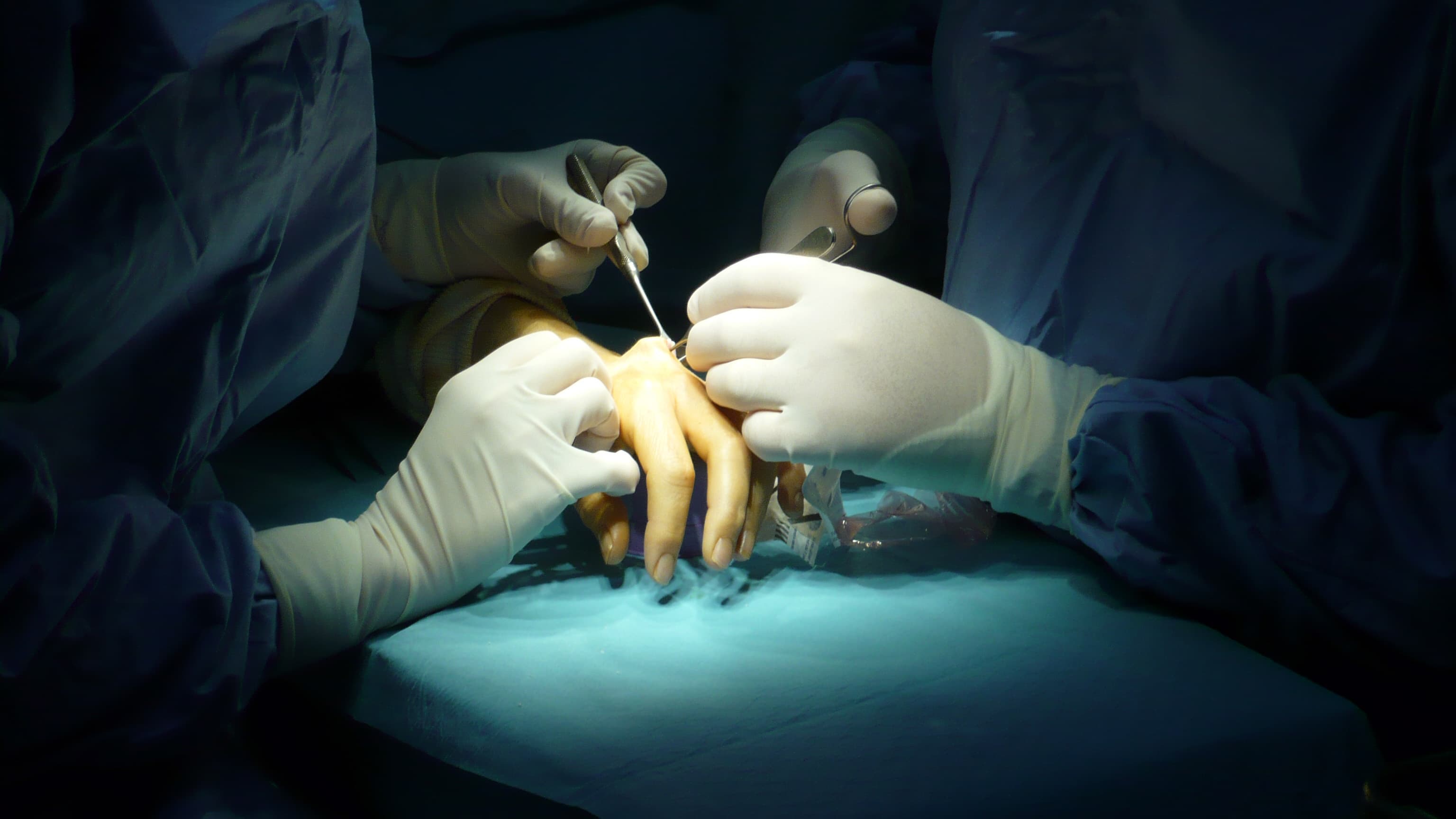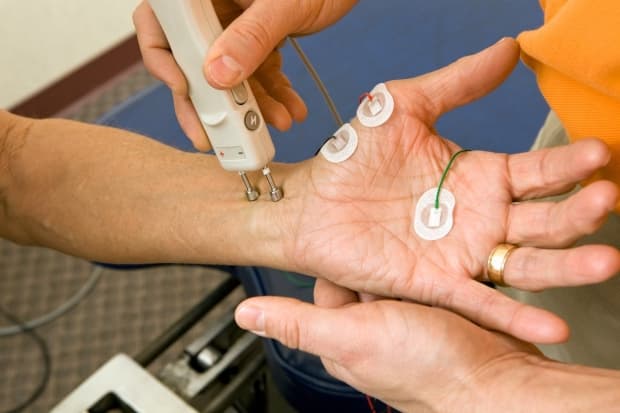Peripheral nerve surgery is a specialized field within neurosurgery and orthopedic surgery that focuses on the diagnosis, treatment, and management of disorders affecting the peripheral nerves. Peripheral nerves are the network of nerves outside the brain and spinal cord that transmit signals between the central nervous system and the rest of the body.
What are peripheral nerve injuries?
Peripheral nerve injuries refer to damage to the peripheral nerves, which are the network of nerves outside the brain and spinal cord responsible for transmitting signals between the central nervous system and the rest of the body. These nerves play a critical role in controlling muscle movements, sensation, and various bodily functions. Peripheral nerve injuries can occur due to a variety of causes, including traumatic injuries, compression, infections, autoimmune diseases, and metabolic disorders.
Traumatic injuries, such as lacerations, fractures, or blunt force trauma, are among the most common causes of peripheral nerve damage. These injuries can result from accidents, sports activities, or surgical procedures. Depending on the severity, traumatic nerve injuries can lead to partial or complete loss of function in the affected area. Compression injuries, such as carpal tunnel syndrome or thoracic outlet syndrome, occur when nerves are compressed by surrounding tissues, leading to pain, numbness, and weakness.
Infections, such as leprosy or Lyme disease, can also affect peripheral nerves, causing inflammation and damage. Autoimmune diseases, like Guillain-Barré syndrome or chronic inflammatory demyelinating polyneuropathy (CIDP), involve the immune system attacking the peripheral nerves, leading to progressive weakness and sensory loss. Metabolic disorders, such as diabetes, can result in diabetic neuropathy, where prolonged high blood sugar levels damage the nerves, leading to symptoms like pain, tingling, and numbness, particularly in the extremities.
The severity of peripheral nerve injuries can vary widely, ranging from mild, temporary symptoms to severe, permanent loss of function. Diagnosis typically involves a combination of clinical examination, imaging studies, and nerve conduction tests to assess the extent of the damage. Treatment options depend on the underlying cause and severity of the injury and may include medications, physical therapy, and in some cases, surgical intervention to repair or decompress the affected nerves.
How are peripheral nerve injuries diagnosed?
The diagnosis of peripheral nerve injuries involves a comprehensive evaluation that includes a detailed medical history, physical examination, and a variety of diagnostic tests to determine the extent and nature of the nerve damage. The process begins with the healthcare provider taking a thorough medical history, inquiring about the patient's symptoms, the onset and progression of those symptoms, any recent injuries or traumas, and any underlying medical conditions that could contribute to nerve damage. A physical examination follows, during which the healthcare provider assesses the affected area for signs of weakness, muscle atrophy, sensory changes, and reflex abnormalities.
To further evaluate the extent of the nerve injury, several diagnostic tests may be employed. Nerve conduction studies (NCS) and electromyography (EMG) are commonly used to assess the electrical activity of nerves and muscles. Nerve conduction studies measure the speed and strength of electrical signals as they travel along the nerve, helping to identify the location and severity of the damage. Electromyography involves inserting a fine needle electrode into the muscles to record electrical activity, providing insights into the muscle's response to nerve signals and detecting any abnormalities.
Imaging studies, such as magnetic resonance imaging (MRI) and high-resolution ultrasound, may also be used to visualize the nerves and surrounding structures. MRI provides detailed images of soft tissues, helping to identify any compression, inflammation, or structural abnormalities affecting the nerves. High-resolution ultrasound is a non-invasive imaging technique that can visualize the nerve's structure and detect any abnormalities, such as swelling or entrapment.
In some cases, additional tests like blood tests or nerve biopsies may be necessary to identify underlying medical conditions or diseases contributing to nerve damage. By combining the information gathered from the medical history, physical examination, and diagnostic tests, healthcare providers can accurately diagnose peripheral nerve injuries and develop an appropriate treatment plan to address the underlying cause and promote nerve recovery.

How are peripheral nerve injuries treated?
The treatment of peripheral nerve injuries often involves surgical interventions aimed at repairing or decompressing the affected nerves to restore function and alleviate symptoms. Surgical treatment is typically considered when conservative measures, such as physical therapy and medications, are insufficient or when there is significant nerve damage due to trauma. One common surgical approach is nerve decompression, which involves relieving pressure on the nerve by removing constrictive tissues or structures. This procedure is often used for conditions like carpal tunnel syndrome, where the median nerve is compressed at the wrist, causing pain, numbness, and weakness.
In cases where the nerve has been severed or severely damaged, nerve repair or nerve grafting may be necessary. Nerve repair involves suturing the ends of the severed nerve together to promote healing and regeneration. If there is a significant gap between the nerve ends, nerve grafting is performed, using a segment of a healthy nerve from another part of the body to bridge the gap and facilitate nerve regeneration. This technique helps restore the continuity of the nerve, allowing for the transmission of signals and the potential for functional recovery.
For more complex injuries, nerve transfer may be employed. Nerve transfer involves redirecting a healthy, functioning nerve from a nearby muscle to restore function to a paralyzed or damaged area. This advanced surgical technique is particularly useful when the original nerve is no longer viable for repair or grafting. Nerve transfers can help reestablish motor function and improve muscle control in the affected area.
Post-surgical rehabilitation is a crucial component of the recovery process, as it helps optimize functional outcomes and promotes nerve regeneration. Rehabilitation includes physical therapy, occupational therapy, and exercises designed to improve strength, flexibility, and coordination. Electrical stimulation and other adjunct therapies may also be used to enhance nerve healing and functional recovery.

Peripheral nerve surgery risks & benefits
Peripheral nerve surgery, like any surgical procedure, comes with its own set of risks and benefits that need to be carefully weighed before proceeding. One of the primary benefits of peripheral nerve surgery is the potential to restore function and alleviate symptoms caused by nerve damage. For patients experiencing pain, weakness, numbness, or loss of function due to peripheral nerve injuries, surgical interventions such as nerve decompression, nerve repair, nerve grafting, and nerve transfer can significantly improve their quality of life. By addressing the underlying cause of the nerve damage, these procedures can help patients regain muscle strength, sensation, and mobility, enabling them to return to their daily activities and enhance their overall well-being.
However, peripheral nerve surgery also carries certain risks and potential complications. One of the primary risks is infection, which can occur at the surgical site or within the surrounding tissues. Surgeons take precautions to minimize this risk by using sterile techniques and prescribing antibiotics, but infections can still develop and may require additional treatment. Another risk is nerve damage, which can occur during the surgery itself. This can lead to worsening symptoms or the development of new issues, such as increased pain or loss of function. Bleeding and hematoma formation are also potential complications, particularly in surgeries involving extensive dissection or manipulation of the nerves.
In some cases, patients may experience incomplete recovery or unsatisfactory outcomes, where the desired improvement in function is not achieved. This can be due to various factors, including the severity and chronicity of the nerve injury, the patient's overall health, and the body's response to surgery. Additionally, scar tissue formation, known as neuroma, can occur at the site of nerve repair, potentially leading to chronic pain or discomfort.
Peripheral nerve surgery recovery
Recovery from peripheral nerve surgery is a crucial period that requires careful monitoring and adherence to post-operative care instructions to ensure optimal healing and restore function. The specific recovery process can vary depending on the type of surgery performed and the severity of the nerve injury. Immediately after surgery, patients are taken to a recovery room where they are closely monitored as they wake up from anesthesia. Pain management is an essential aspect of the recovery process, and patients may receive medications through intravenous (IV) lines, oral medications, or nerve blocks to alleviate discomfort.
In the early stages of recovery, it is common to experience some swelling, bruising, and limited mobility in the surgical area. Rest and immobilization of the affected limb or area are often recommended to promote healing and prevent further injury. Depending on the surgery, a splint or brace may be used to protect the repaired nerve and maintain proper alignment. Physical therapy and occupational therapy play a vital role in the recovery process, focusing on exercises and activities that improve strength, flexibility, and coordination. These therapies help patients regain function and mobility while preventing stiffness and muscle atrophy.
Electrical stimulation and other adjunct therapies may be used to enhance nerve regeneration and functional recovery. Patients are encouraged to engage in regular follow-up appointments with their healthcare provider to monitor progress, address any concerns, and adjust the treatment plan as needed. The timeline for recovery can vary widely, with some patients experiencing significant improvement within weeks, while others may require several months to achieve optimal results.
It is important for patients to follow their healthcare provider's instructions carefully, avoid activities that could strain the repaired nerve, and practice patience throughout the recovery process. By adhering to post-operative care guidelines and participating in rehabilitation, patients can maximize their chances of a successful recovery and regain their quality of life.
Conclusion
In conclusion, peripheral nerve surgery is a vital and specialized field focused on diagnosing and treating conditions affecting the peripheral nerves. Through various surgical techniques, including nerve decompression, repair, grafting, and transfer, surgeons aim to restore nerve function, alleviate pain, and improve the overall quality of life for patients. While the procedure carries certain risks, such as infection, nerve damage, and incomplete recovery, the potential benefits often outweigh these challenges. Successful outcomes depend on meticulous surgical technique, comprehensive postoperative care, and patient adherence to rehabilitation protocols. By combining surgical expertise with advancements in microsurgical techniques and multidisciplinary care, peripheral nerve surgery offers hope and improved quality of life for individuals suffering from nerve-related conditions. Early diagnosis and timely intervention are crucial for achieving the best possible results, underscoring the importance of this specialized field in modern medicine.
Read More